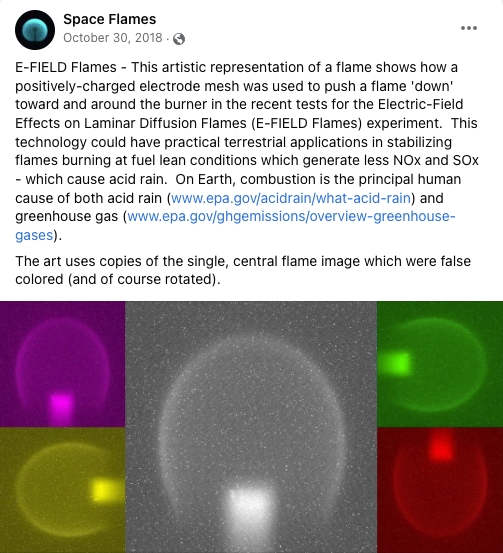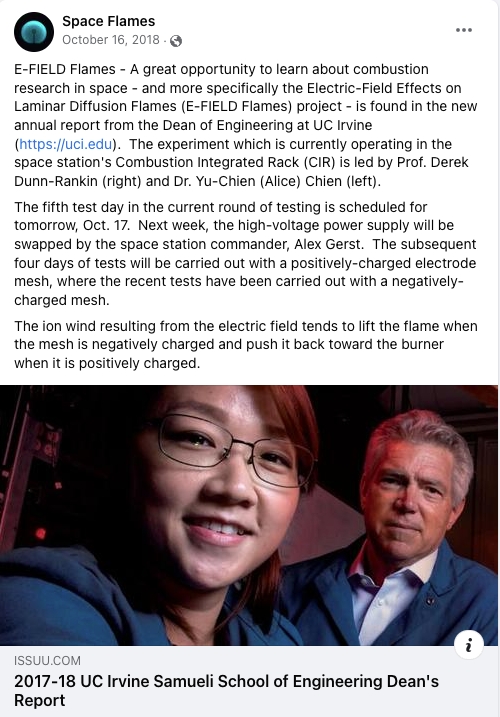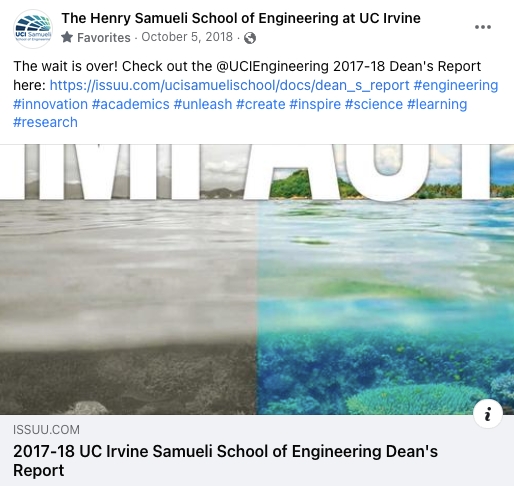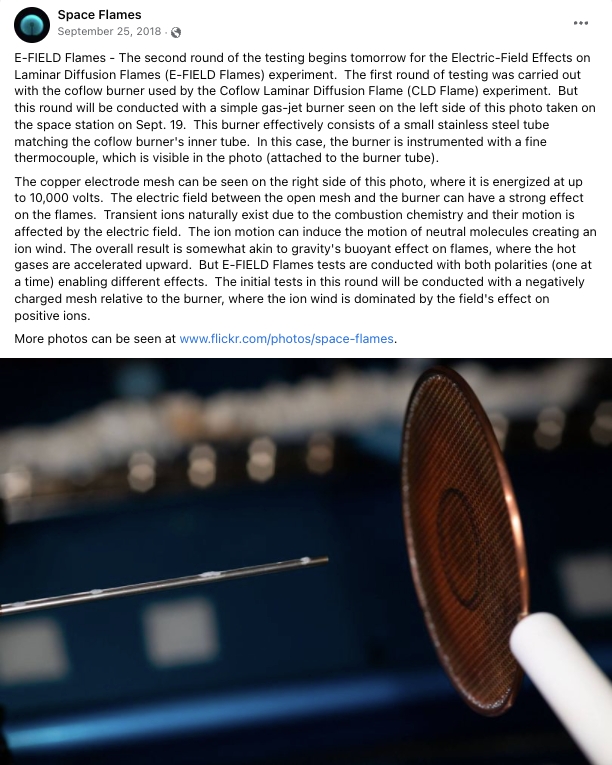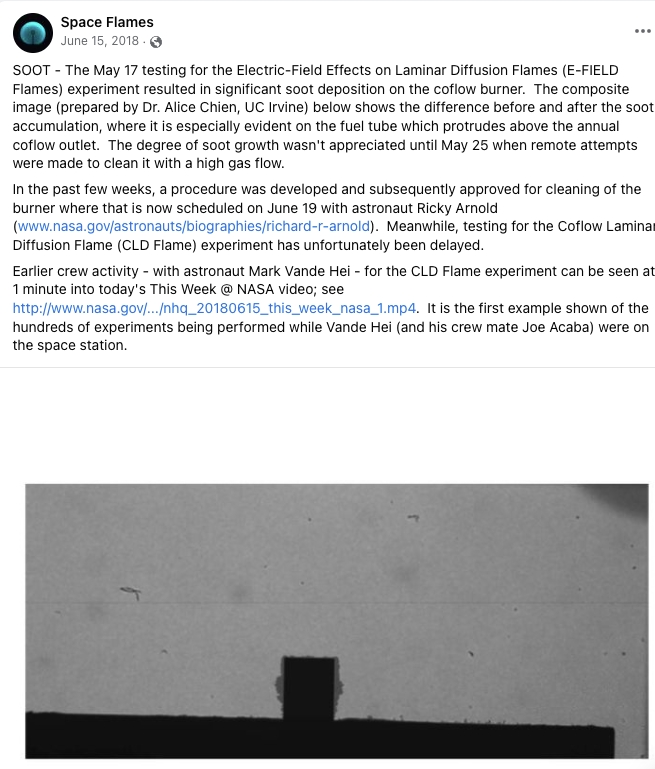Read the full post with the link on the image below.
@space.flames on facebook by NASA
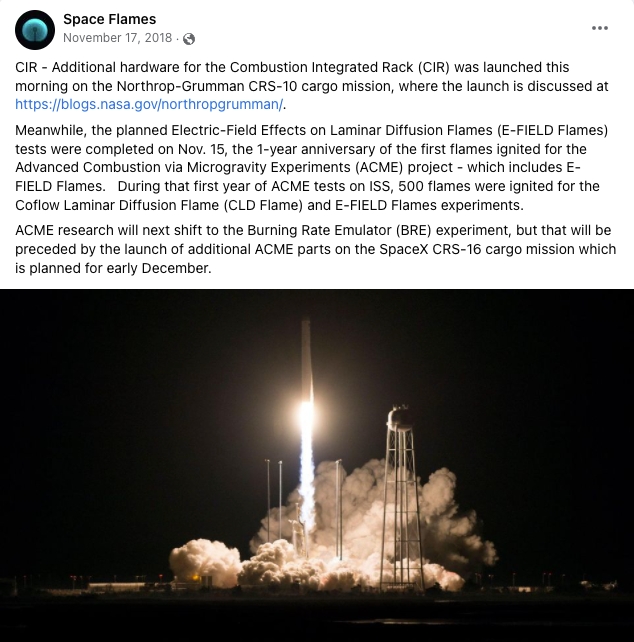
Thank you! E-FIELD Flames tests completed (Electric-Field Effects on Laminar Diffusion Flames)
Downward ion wind generates with negative field strength: Electric-Field Effects on Laminar Diffusion Flames (E-FIELD Flames)
2018 Dean’s report: ISS Electric-Field Effects on Laminar Diffusion Flames (E-FIELD Flames)
International Space Station (ISS) Combustion Experiments: Electric-Field Effects on Laminar Diffusion Flames
Full article on the Combustion Institute or at https://www.combustioninstitute.org/news/international-space-station-iss-combustion-experiments/.
The ISS Combustion Experiment from UC, Irvine is mentioned in the Combustion Institute news (screenshot below).
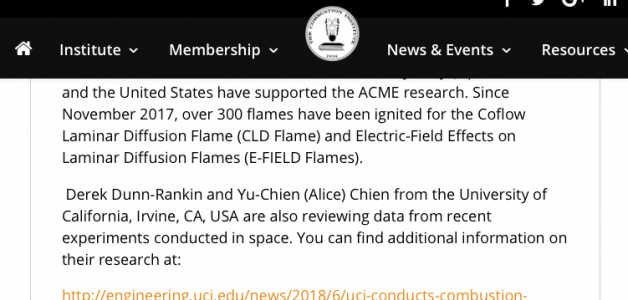
Microgravity E-FIELD Flames experiment — round 2: Electric-Field Effects on Laminar Diffusion Flames
UC Irvine — an article from School of Engineering
“The problem is, it is difficult on Earth to try to understand how combustion works, because gravity and the resulting buoyancy affect the way flames behave. So scientists look to zero-gravity or microgravity environments to get an unadulterated view of the process.”
“NASA scientists and NASA contractors are critical to the operation as modifications and unplanned outcomes are the norm in zero-gravity science. Compromise is a constant companion. ‘We had to plan and calculate everything … it’s a little bit of a struggle,’ Chien says. “And sometimes things fail. Everything is not nice and smooth all the time.'”
“Are the results of Phase I what Dunn-Rankin and Chien expected? No. ‘We were expecting to see what we might see on Earth,’ says Chien, who ran similar experiments on terra firma during her doctoral studies at UCI. “But from the Space Station, we actually are seeing soot eliminated in some cases under the influences of the electric field.”
Full article: https://engineering.uci.edu/news/2018/6/uci-conducts-combustion-research-aboard-international-space-station.
@space.flames on facebook by NASA
@uciengineering on instagram by The Henry Samueli School of Engineering at UC Irvine


Soot accumulating on the fuel tube: Electric-Field Effects on Laminar Diffusion Flames( E-FIELD Flames)
Full post at the link open in new window to the image below.
Soot creates marks on the cooper mesh: Electric-Field Effects on Laminar Diffusion Flames( E-FIELD Flames)
Soot changing with electric field in microgravity experiments: Electric-Field Effects on Laminar Diffusion Flames( E-FIELD Flames)
Soot is observed reducing with applying electric field in the E-FIELD Flames experiment video at International Space Station (ISS).
@space.flames on facebook by NASA
Microgravity Electric-Field Effects on Laminar Diffusion Flames (E-FIELD Flames) experiment initiated
One of the first Electric-Field Effects on Laminar Diffusion Flames (E-FIELD Flames) experiment video at International Space Station (ISS).
@space.flames on facebook by NASA
